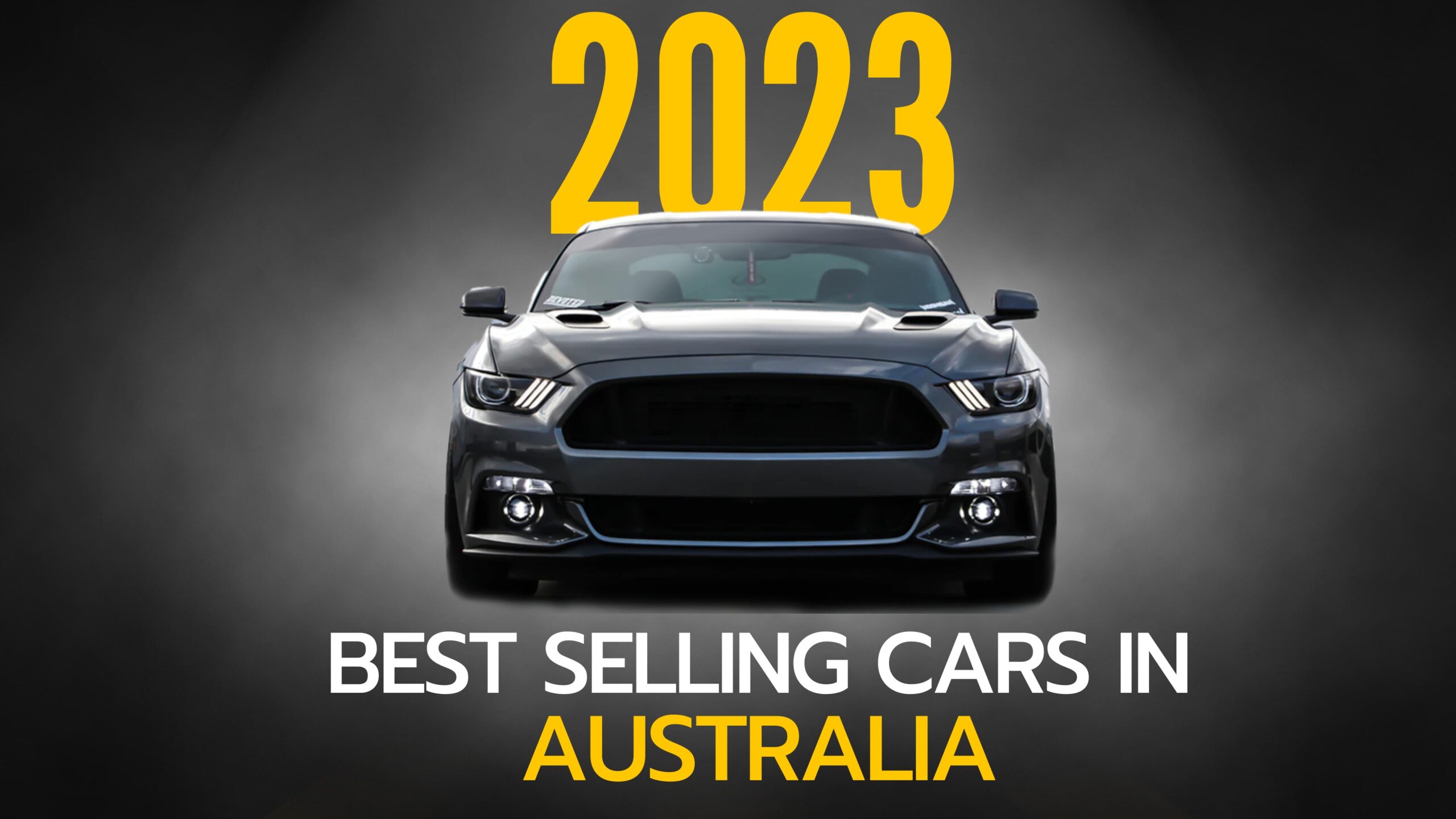2023 Best-Selling Cars In Australia
The automotive industry in Australia is distinguished by a thriving and competitive market that provides a large selection of automobiles to accommodate various demands and tastes. In this busy environment, some make have repeatedly stood out as the best-selling vehicles in the nation. Performance, dependability, features, and general appeal are just a few elements that have contributed to these cars’ success. The top ten best-selling cars in Australia in 2023 span a variety of vehicle types and suit various needs and lifestyles. These models, which range from durable and adaptable pickup trucks to fuel-efficient small automobiles, have attracted the interest and trust of Australian drivers.
Number 10:
2023 Hyundai Tucson
Units sold in 2023 Approx: 12,411 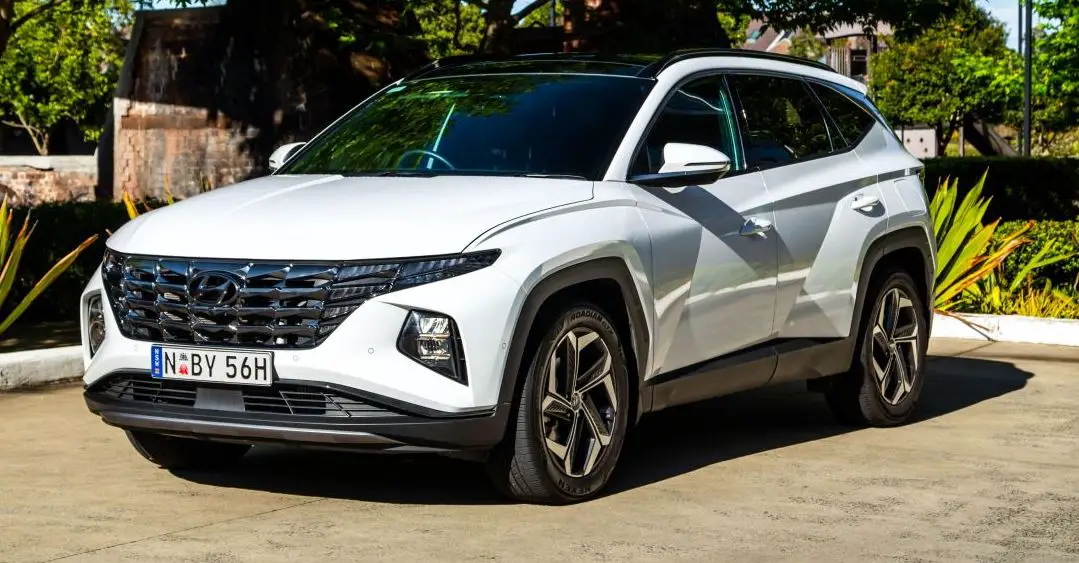
- MSRP: $34,900 est.
- Manufacturer: Hyundai
- Layout: FWD/AWD
- Body Style: 4-door SUV
- Seating Capacity: 5 People
- Engine: 2.5-liter four-cylinder/turbocharged 1.6-liter four-cylinder
- Horsepower: 187 hp
- Torque: 178 lb-ft
- Fuel Tank Capacity: 14.3 Gal.
The 2023 Hyundai Tucson stands out amid its more sober-looking compact SUV competitors. That doesn’t imply that Tucson forgoes affordability or usefulness. Both are boasted. With the Tucson, Hyundai took a broad strategy to make it appealing to a wide audience by offering a number of trims and engines, including a hybrid and plug-in hybrid. In comparison to the base 2.5-litre four-cylinder engine, the hybrid and plug-in hybrid models have a turbocharged 1.6-litre four-cylinder that is assisted by an electric motor. Tucson’s base versions are well-equipped, while its top trims cross the boundary from mainstream to premium, giving it an advantage over competitors. The 2023 Hyundai Tucson stands at number 10 in the series of best-selling cars in Australia.
Number 9:
2023 Hyundai i30
Units sold in 2023 Approx: 13,079
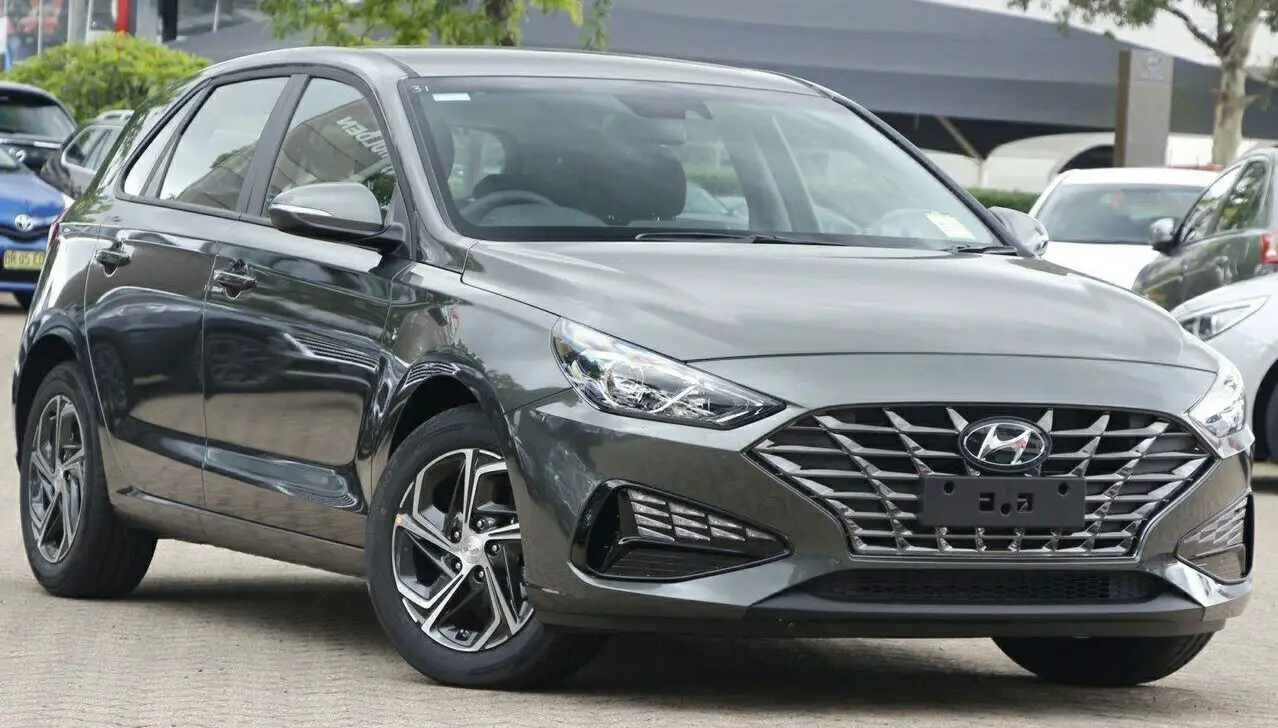
- MSRP: $23,720 est.
- Manufacturer: Hyundai
- Layout: FWD/AWD
- Body Style: 5-door hatchback
- Seating Capacity: 5-passengers
- Engine: turbocharged 2.0-litre four-cylinder
- Horsepower: 160 hp
- Torque: 140 lb. ft
- Fuel Tank Capacity: 13.2 Gal.
The well-known 2.0-litre turbocharged four-cylinder engine powers the 2023 Hyundai i30. The i30 is a punchy beast, putting out 140 pounds. ft. of torque and 160 horsepower. The engine has a sense of urgency about it that other performance engines seem to miss, and it feels like it is always prepared to pounce. There is very little latency between ratios, the changes are clean, and the gearbox is simple to use. There are options for both petrol and diesel engines, some of which have 48V mild hybrid technology and Intelligent Manual Transmissions (iMT) for even greater fuel efficiency. The brand-new i30 Waggon features the most recent safety technology in addition to adventure and performance. Unwind knowing your travels will be secure and comfortable. The i30 Fastback has always been a lovely beauty to behold with its sloping profile and gently sloped roofline. The i30 Fastback looks as good as it drives thanks to its reduced body and strong turbo engines. The 2023 Hyundai i-30 stands at number 9 in the list of top-ten best-selling cars in Australia.
Number 8:
2023 Mitsubishi Outlander
Units sold in 2023 Approx: 13,120
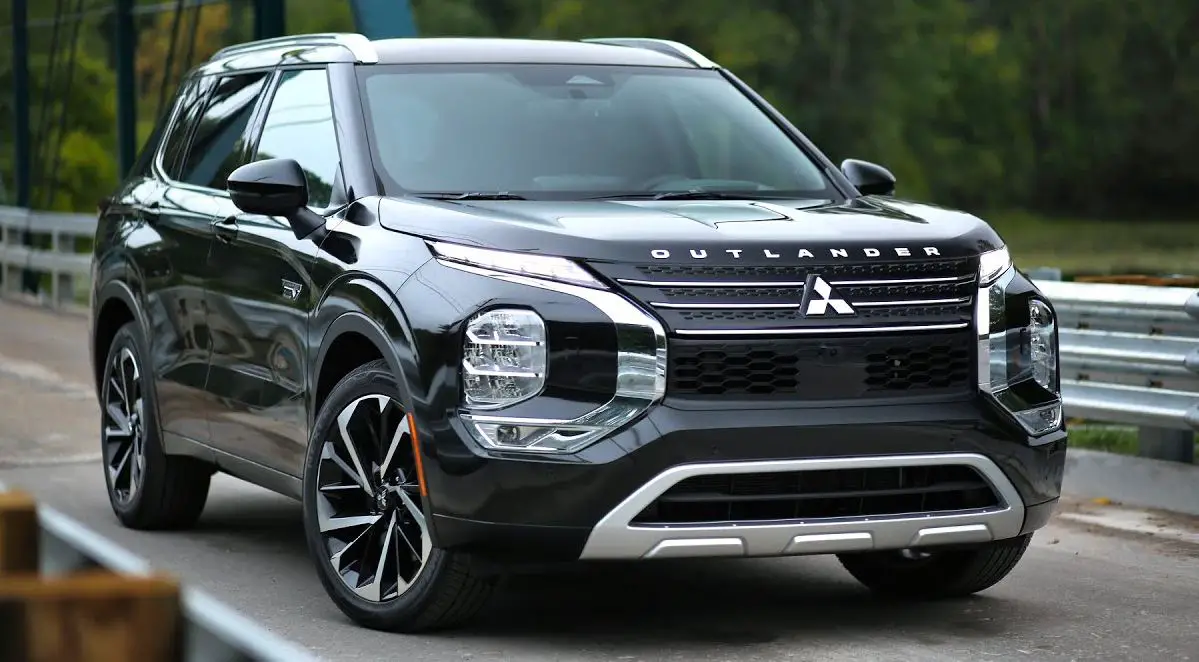
- MSRP: $37,240 est.
- Manufacturer: Mitsubishi Motors
- Layout: AWD
- Body Style: 4-door compact crossover SUV
- Seating Capacity: 5-passengers
- Engine: 148-hp 2.0-liter/168-hp 2.4-liter
- Horsepower: 181 hp
- Torque: 188 lb. ft
- Fuel Tank Capacity: 14.8 Gal.
The 2023 Mitsubishi Outlander has a beautiful appearance and a strong powertrain warranty. Unfortunately, the ageing Mitsubishi subcompact SUV only has two things going for it. Yes, the outside has just been updated, but those merely cosmetic changes did nothing to address the dated interior design and poor cabin materials. Despite the availability of four-cylinder engines, all-wheel drive is the norm. Both the 148 horsepower of the 2.0-litre engine’s base model and the 168 horsepower of the 2.4-litre engine’s optional model are uninspiring in terms of performance and fuel efficiency. The Outlander Sport will safely transport passengers to their destination, but in spite of its fashionable design and the word “sport” in its name, it has a dull driving manner. The fact that the two-row ute is neither the cheapest nor the least upscale seals its fate as a small SUV that belongs at the bottom of your list. The 2023 Mitsubishi Outlander stands at number 7 in the series of best-selling cars in Australia.
Number 7:
2023 Mazda CX-5
Units sold in 2023 Approx: 13,223
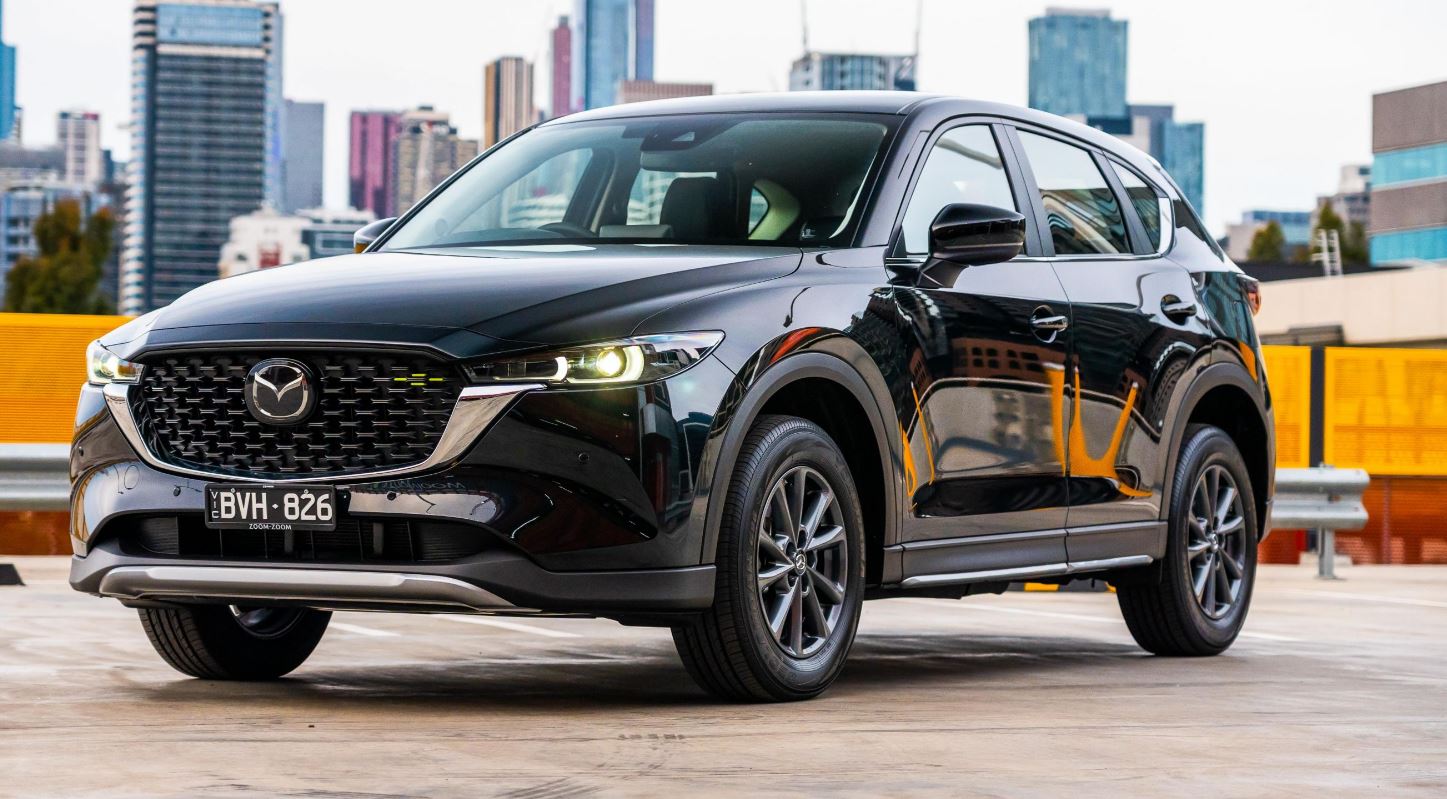
- MSRP: $36,110 to $55,100
- Manufacturer: Mazda
- Layout: AWD
- Body Style: 4-door compact SUV
- Seating Capacity: 5-passengers
- Engine: 2.5 DOHC 16-valve 4-cylinder
- Horsepower: 187 hp
- Torque: 186 lb. ft
- Fuel Tank Capacity: 15.3 Gal.
The 2023 Mazda CX-5 stands at number seven in the series of top-10 most-selling cars in Australia. The 2023 Mazda CX-5 not only maintains the reputation of the company for responsive handling, but it also offers a nearly opulent experience at competitive costs. Because of this special blend of responsive driving and opulent interior styling, the CX-5 is one of our favourite small SUVs, especially in higher-end models with the optional 256-hp turbocharged four-cylinder engine. Although all models come standard with all-wheel drive and the CX-5’s agile handling, which is pleasurable regardless of the engine you choose, the base engine is a less potent 187-hp four. Both engines come with an all-wheel drive system and a quick six-speed automated gearbox. Hard driving is not necessary for the CX-5 to be fun or for one to realise its excellence. Yes, with its precise driving and smooth bends, it makes for one hell of a Sunday cruise.
Number 6:
2023 Isuzu D-Max
Units sold in 2023 Approx: 15,313
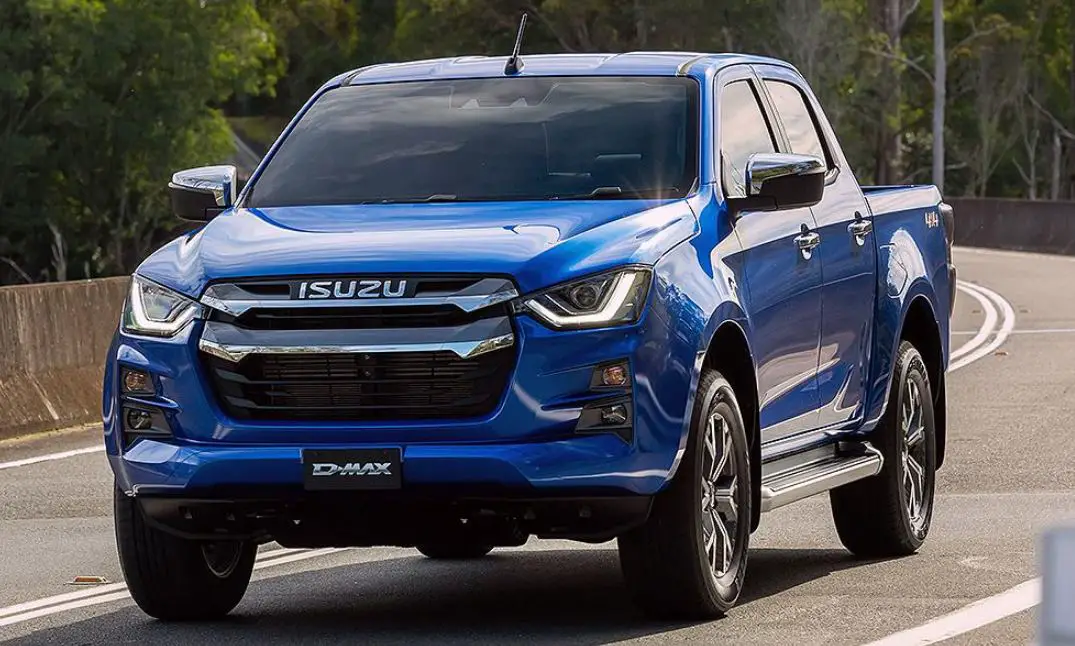
- MSRP: $63,500 est.
- Manufacturer: Isuzu Motors
- Layout: RWD
- Body Style: 4-door cab chassis
- Seating Capacity: 5-passengers
- Engine: 3.0L DIESEL TURBO 4 engine
- Horsepower: 188 hp
- Torque: 331 lb. ft
- Fuel Tank Capacity: 20 Gal.
The 2023 Isuzu D-Max stands at number six in the series of top ten best-selling cars in Australia. The 2023 range adds three new model variants, bolder styling, and functional enhancements without changing the tried-and-true recipe for the ute’s popularity. Most of the 2023 lineup is powered by the renowned 3.0-litre turbo-diesel from Isuzu, with the same six-speed auto, thus performance is unaltered. That’s actually a good thing because the 3.0-litre’s indestructible nature is what convinces many customers to buy. The changes for 2023 don’t exactly translate into “more value,” but they are all practical upgrades that any customer would value, especially those getting a free upgrade to the new model. For base models, a new grille design is finished in a variety of two-tone colour schemes, ranging from black and grey to various shades of grey-on-grey for the LS-U and LS-U+ and the top-tier X-Terrain. Grey inlays for the LED taillights in the back continue the darker design concept.
Number 5:
2023 Toyota RAV4
Units sold in 2023 Approx: 16,273
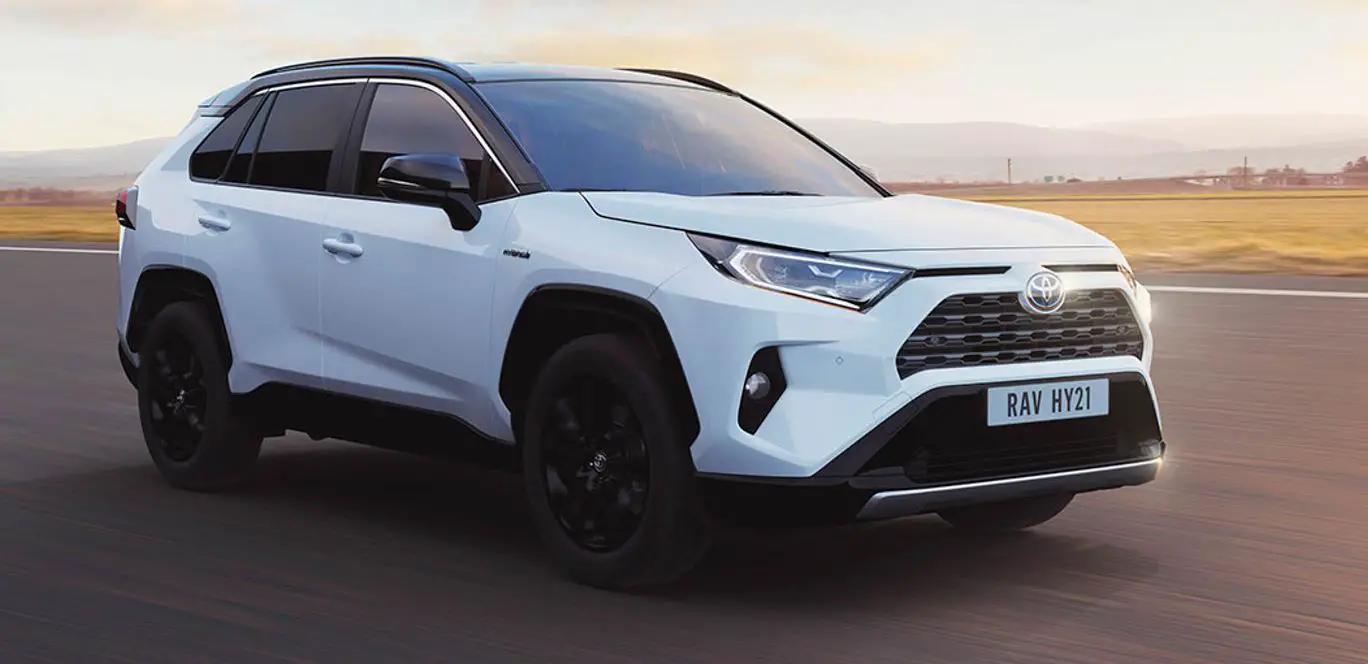
- MSRP: $39,760 to $58,630
- Manufacturer: Toyota
- Layout: FWD/AWD
- Body Style: 5-door compact crossover SUV
- Seating Capacity: 5-passengers
- Engine: 2.5-litre four-cylinder
- Horsepower: 203 hp
- Torque: 163 lb. ft
- Fuel Tank Capacity: 14.5 Gal.
The RAV4 is a Toyota model that has been a consistent best-seller for many years for good reason; it’s a sensible, efficient SUV. The cargo-friendly interior, low base price, and competent handling of the 2023 RAV4 carry on the legacy. A 2.5-litre four-cylinder and an eight-speed automatic gearbox work together to power the front or all four wheels. Fuel efficiency is good despite a little sluggish acceleration. There are also options for a hybrid and a plug-in hybrid powerplant. When utilised for suburban tasks like routine commuting and trips to the hardware store, the RAV4 performs well. The RAV4’s value in comparison to competitors is boosted by Toyota’s inclusion of a plethora of attractive infotainment systems and driver-assistance technologies as standard equipment. The 2023 Toyota Rav 4 stands at number 5 in the series of top ten best-selling cars in Australia.
Number 4:
2023 Tesla Model Y
Units sold in 2023 Approx: 17,332
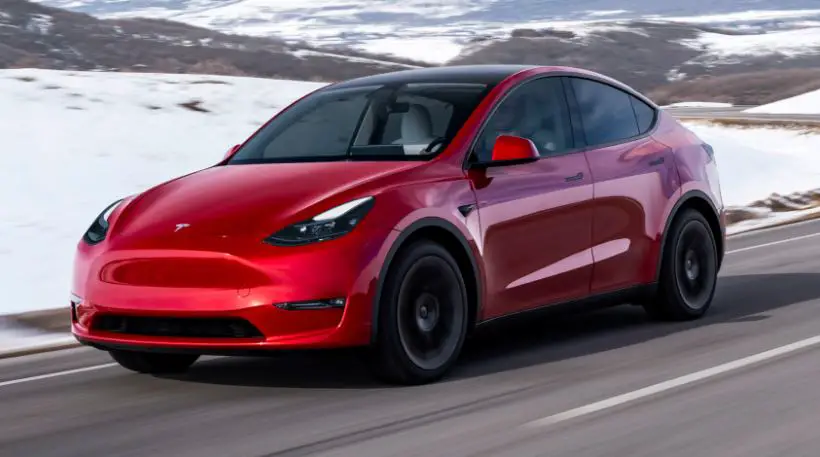
- MSRP: $65,400 est.
- Manufacturer: Tesla
- Layout: AWD
- Body Style: mid-size crossover SUV
- Seating Capacity: 5-passengers
- Engine: Electric
- Horsepower: 425 to 455 hp
- Torque: 475 to 487 lb-ft
The Tesla Model Y from 2023 is a far less appealing option. The electric crossover is less manoeuvrable and has a shorter driving range. The Y’s interior is made of low-quality materials, just like the Model 3, and all of the SUV’s controls are located on a single infotainment display that is affixed to the dashboard. Tesla Model Y stands at number 4 in the series of top 10 best-selling cars in Australia.
Number 3:
2023 MG ZS
Units sold in 2023 Approx: 17,431
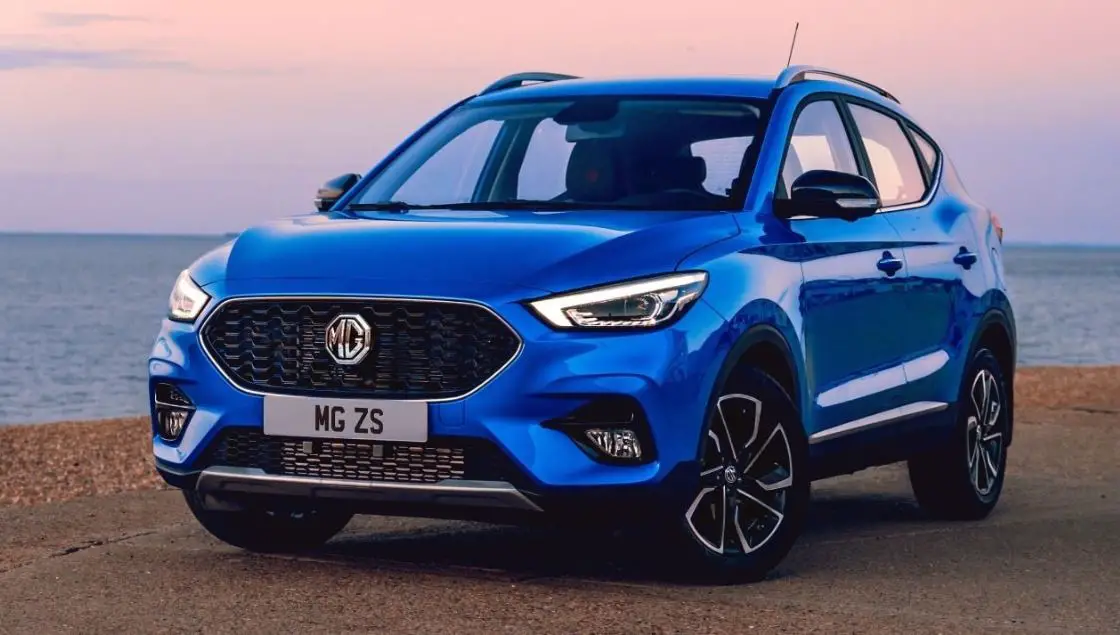
- MSRP: ∼ $43,990
- Units Sold: 7,321
- Manufacturer: SAIC Motor
- Layout: FWD
- Body Style: 4-door subcompact crossover SUV
- Seating Capacity: 5-passengers
- Engine: 1.5L INLINE 4 engine
- Horsepower: 112 hp
- Torque: 110 lb. ft
- Fuel Tank Capacity: 12.6 Gal.
The MG ZS is a small family SUV that is highly recommended if you’re searching for something practical, inexpensive, and well-equipped. The standard fabric seats may be adjusted to a comfortable level, and the controls you’ll need the most are conveniently located and organised in a logical, uncluttered way. A 10.1-inch colour touchscreen is standard on both the Excite and Exclusive trims for the infotainment system. You get Android Auto and Apple CarPlay, and the Exclusive also features an inbuilt GPS. The MG’s system is simple to use and responsive to touch input, however, some of the menus can be challenging to navigate back a page. Not as many pleasant details are added to the back seats. The ZS is available with two petrol engines. Choose the 1.5-litre petrol model if you drive a lot of miles on the highway or the 1.0-litre turbo petrol type if you spend a lot of time in town. Both are reasonably quiet, albeit not very fast and will achieve about 35 mpg in typical driving situations as opposed to the 44.9 mpg and 49.6 mpg stated by MG, respectively. The MG ZS is #3 in the list of top 10 best-selling cars in Australia.
Number 2 :
2023 Ford Ranger
Units sold in 2023 Approx: 31,884
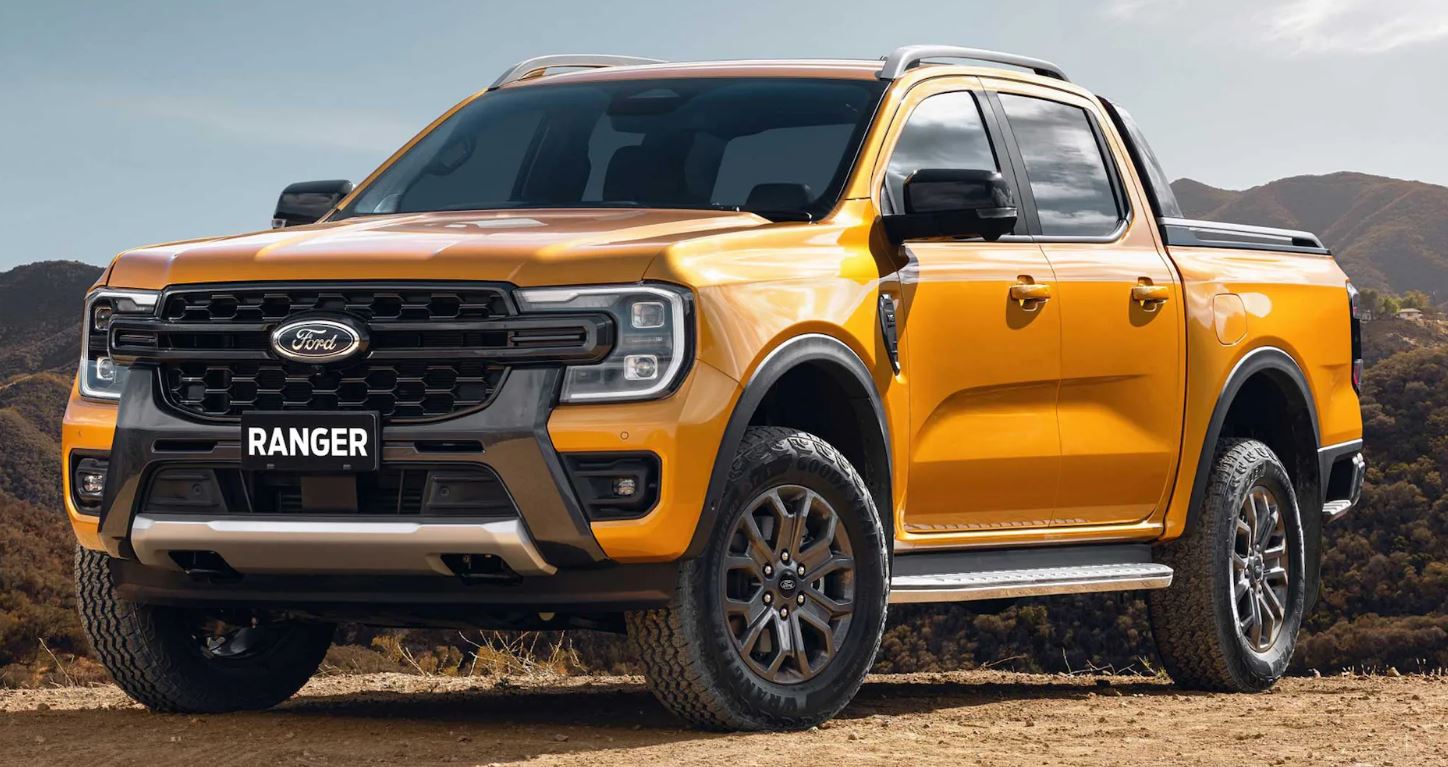
- MSRP: $35,930 to $87,990
- Manufacturer: Ford
- Layout: RWD
- Body Style: 4-door Pickup
- Seating Capacity: 5-passengers
- Engine: turbocharged 2.3-litre four-cylinder
- Horsepower: 270 hp
- Torque: 310 lb. ft
- Fuel Tank Capacity: 21.1 Gal.
The Ranger comes with a 270-hp turbocharged inline-four and 10-speed automated gearbox and is seen as more of a diet F-150 than a mini-truck. Although it has tremendous power, it doesn’t have the fuel efficiency we’d anticipate from a tiny turbo-four. With a maximum towing capability of 7,500 pounds, it makes a huge impact. Even though the Ranger isn’t as modern as some of its rivals, rear-wheel drive is the default and four-wheel drive is an option. A four-door SuperCrew with a five-foot bed or a two-door SuperCab with a six-foot bed can be chosen for the Ranger. A 10-speed automatic gearbox is standard on all Ranger trucks, and it offers seamless and rapid shifts. Models with rear-wheel drive have an 8.4-inch ground clearance while those with four-wheel drive have an 8.9-inch clearance. The 2023 Ford Ranger stands at number 2 in the series of best-selling cars in Australia.
Number 1:
2023 Toyota Hilux
Units sold in 2023 Approx: 32,763
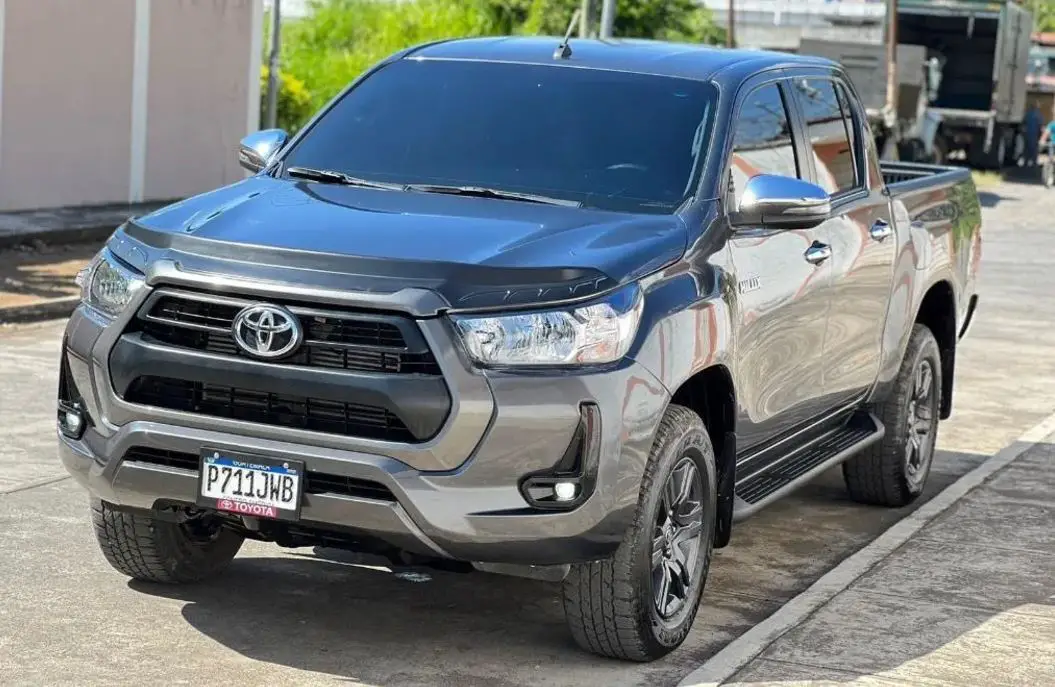
- MSRP: $61,930 est.
- Manufacturer: Toyota
- Layout: AWD/RWD
- Body Style: 4-door Pickup
- Seating Capacity: 5-passengers
- Engine: 2.8-litre four-cylinder turbo-diesel
- Horsepower: 221 hp
- Fuel Tank Capacity: 21.1 Gal.
- Torque: 405 lb. ft
The 2023 Toyota Hilux stands at number 1 in the series of top 10 most-selling cars in Australia. The 2.8-litre four-cylinder turbo-diesel, which comes with a six-speed automated gearbox, is the most potent engine available for the 2023 Toyota Hilux. It generates 500Nm of torque between 1600 and 2800 rpm and 150kW of power at 3400 rpm. At 1400-3400 rpm, manual variants produce 420Nm of torque. The lineup includes both rear-wheel drive and four-wheel drive options, and both manual and automatic transmissions are available for all powertrains. The normal gearbox for petrol cars is a five-speed manual, whereas the typical gearbox for diesel is a six-speed. A six-speed automatic gearbox could be standard or optional, depending on the model. The Workmate Double Cab is 5330mm long and 1855mm wide, while the Single Cab and Workmate 42 Double Cab are each 5325mm long and 1800mm wide, respectively. Ground clearance is specified at 216mm for all variations, with the exception of 42 vehicles with the base petrol engine (174mm), which had a 3085mm wheelbase. For petrol models, the braking towing capacity is 2500 kg, for 42 diesel models it is 2800 kg, and for all 44 models, it is 3500 kg.

